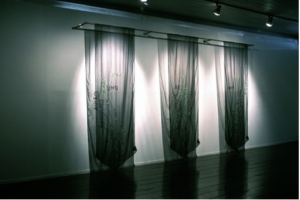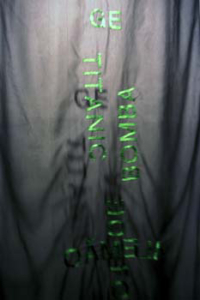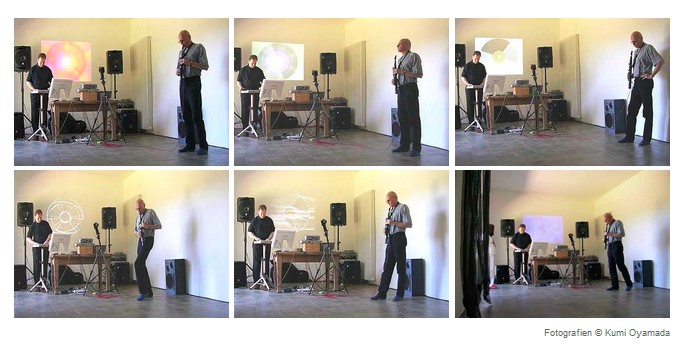Bandeiras
Rio’s drug mafia rules the slums (Favelas). The flags (bandeiras) tell the story
2002 (5′21″)
Installation
The installations “Bandeiras” and “Bandeiras encontro” draw attention to the practices of the three drug syndicates in the favelas, the poor neighbourhoods of Rio de Janeiro.
In every carnival parade, you can recognise the participating carnival associations by their respective flags, which are called bandeiras, or standards. The favela (Port. slum) Jacarezinho (meaning small alligator) is proud to have its own samba school. The bandeiras express the enthusiasm and willingness of each association to pay homage to the carnival god as the perpetual bringer of the elixir of life and to offer him mottos as sacrificial offerings, e.g. certain problems in the favelas, which this idol may and can formulate and denounce.
The black, transparent lingerie fabric of the bandeiras is embroidered with words in green silk. The meaning of these words accompany life in the favelas: the symbols of the three drug syndicates that dominate the favelas (Comando Vermelho, Amigos dos Amigos, Terceiro Comando ), abbreviations such as GE (General Electric, this multinational has cut Jacarezinho off from the outside world with a thick wall), MPF (Movimanto Popular de Favelas; an organisation that lets the favelas communicate with each other) and ONG (Non Government Organisation), but also characterising words and slang that I heard in the favelas are embroidered.
Caused by a fan, the bandeiras sweep gently across the floor. These air sounds can be heard from the small loudspeakers embedded in the fabric. They underline the delicate fragility that ferments under the skin of the criminalised social order in the ghettos. You can also see the moving shadows of the above-mentioned embroidered words on the white wall of the exhibition space. A reference to the shadowy existence of the drug cartels.
Opposite the Bandeiras is the partial composition Bandeiras encontro, soundscapes from the favelas of Vicigao, Rozinho and Jacarezinho. The drums were played by children from the theatre group “Nos do Morro” in Vicigao and underline the violence that prevails in the favelas.
In Bandeiras you can hear other sounds, a personally conscious dependency.



